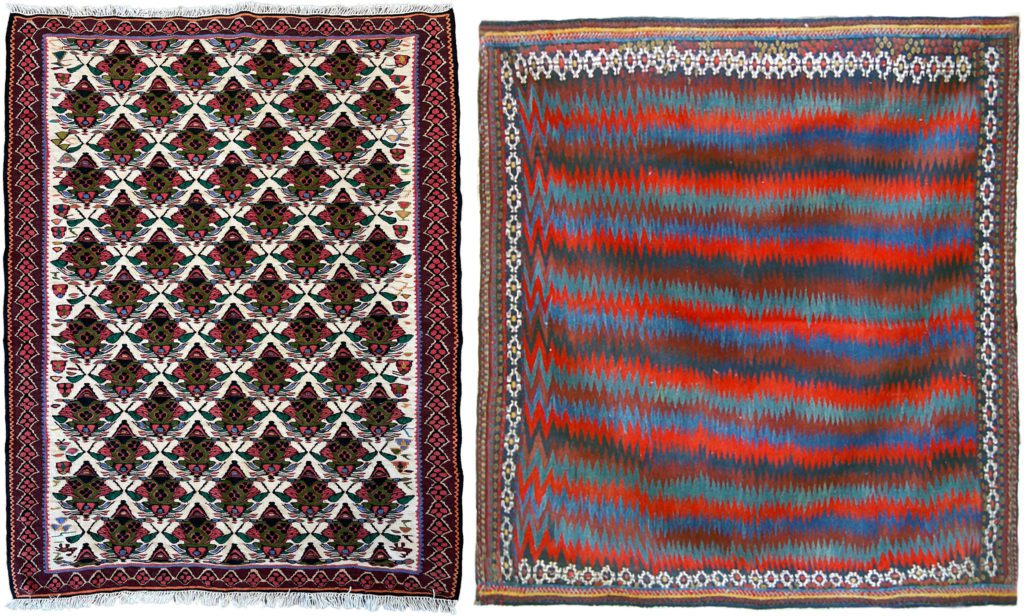A Brief History – Flatweave Carpets
Whether you have just fallen in love with Persian carpets or are a long-time collector, flatweave carpets tend to receive less attention than their piled counterparts. In this week’s blog, we will be learning about the various styles of flatweaves and their unique characteristics.
When one begins their search for hand-knotted flatweave carpets, chances are they will encounter kilims. The word kilim originates from Persian and roughly translates to “spread roughly.” Today, Kilim is an umbrella term used to identify rugs with no pile and woven with an exposed weft. However, there are two categories that Kilims fall into, jajim carpets and soumak carpets. Both styles of flatweave carpet have subtle differences, yet these distinguishing features make each type unique.



The most common style of kilim is the Jajimjajim. Persian Jajimjajims are composed of hand-spun wooland sometimes include long strips of canvas woven together. The unique identifier of Jajim carpets comes from their weave and the manner in which they are bound together. All hand-knotted Kilim weaves utilize an open weft weave which implies that the vertical warp threads are interlaced by horizontal weft threads, creating a canvas pile. Jajims carpets are identified by gaps between their motifs caused by the splitweave. The Splitweave requires the weaver to end a motif on a vertical warp thread and begin the next motif on the adjacent warp. This absence of foundation leaves a distinctive gap between the elements. Some jajims may utilize a dovetail weave, which does not leave a gap between motifs, though this style provides more of a blend of jajim and the next style to be reviewed, soumak.



On the other hand, soumak carpets have an additional level of detailing that is not found in other kilim carpets. Like jajim rugs, soumaks possess a flatweave foundation and pile, which requires the vertical warp foundation threads to be interwoven by the horizontal weft threads. Soumak carpets can be identified by an additional layer of detailing embroidered into the design. The embroidery component that provides this decoration can be seen in the excess threads on the backside of the carpet. As seen in the example, this embroidery and detailing cannot be replicated in jajim carpets, and the added complexity makes the soumaks inherently more desirable.


Regardless of which style of flatweave carpet you prefer, kilims should never be overlooked, especially when it comes to their functional application. Kilim carpets are ideal for those that desire bright, colorful area carpets that either receive lots of foot traffic or where a piled rug would be too plush. Many soumak and jajim carpets are known for bright, organic, and fade-resistant hues. In addition, flatweave carpets are incredibly durable, making them ideal as an entryway piece or even a living room carpet.



Wherever they may reside, kilim pieces will always be beautiful and functional for a space. If you enjoyed these examples, make sure to check out orleyshabahang.com for the rest of our flatweave collection. Also, visit our digital 1stdibs showroom to see the rest of our available carpets.

